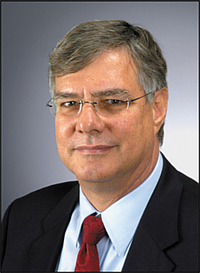Finish Line in Sight for BAS Transition
RESTON, VA.
As a new year begins, it is commonplace to look back on the accomplishments and challenges of the past year. While the sheer complexity of the BAS transition ensured that 2008 would be a year of many challenges, I am awed by the progress Sprint Nextel and the broadcast community have made in the past 12 months.
Overall, 30 percent of all BAS operators in the United States have transitioned their BAS operations to frequencies above 2025 MHz. These stations cover 64 markets and a population of about 84 million and include major markets like Washington, D.C., Houston and Chicago. We also met our commitment to complete the transitions in all the Mobile Satellite Service (MSS) priority markets. This substantial undertaking involved transitioning 26 markets that cover a combined population of more than 40 million people. Accommodating the MSS operators diverted resources from other scheduled markets, imposed greater costs and delayed the transition in some of the markets scheduled to transition earlier in 2008.
CONTRACTING ISSUES
In 2008, the BAS community and Sprint resolved nearly all outstanding contracting issues and turned their attention to ensuring that the manufacturers, integrators, shippers, and installers meet the terms of the executed contracts. The vast majority of Frequency Relocation Agreements—99 percent—are either complete or awaiting incumbent document review or compliance with state law.

Michael Degitz As a result, equipment installation and cut-over activity increased an impressive 322 and 650 percent respectively from one year ago. While this is a remarkable accomplishment, it is made even more impressive given the need to have all mobile, fixed, and portable newsgathering units in service at all times to cover the longest and most hard-fought Presidential election in recent memory.
With this progress, 50 percent have received all of the equipment necessary to transition to the new band plan. Receipt of all of the BAS equipment necessary for the transition including control systems, mobile and fixed transmitters, connectors, cabling, transmission lines, antennas, decoders, modulators and central receive antennas clears the way for broadcasters to install and relocate their operations in coordination with other operators in their market. In fact, 38 percent of broadcasters have installed their new equipment.
As successful as 2008 has been, I look forward to working with broadcasters, equipment manufacturers and vendors to make even more progress in 2009. The finish line is in sight, and we must keep working together to reach it.
EXTENDING THE CONSTRUCTION PERIOD
Broadcasters should be aware that if the FCC buildout date is approaching for your station's modification application to add digital operations and your station is not ready to transition to the new band plan you must file an extension request with the FCC to keep the application active. This extension request should explain that the application was filed to comply with the transition of the 1990-2025 MHz band from the Broadcast Auxiliary Service to emerging technologies but your TV market or your station is not ready to transition and, therefore, you need Commission permission to extend the construction period.
If your application contains any frequency bands other than 1990-2110 MHz it is critical that you include these frequency bands in your extension request. You should state that these other frequency bands are part of an integrated system and that these frequencies will be reported constructed along with the 1990-2110 MHz frequencies when the TV market or station is transitioned. If you do not explain that frequency bands other than 1990-2110 MHz are part of an integrated system, your application may be dismissed.
Michael Degitz is vice president of global development and spectrum management for Sprint Nextel
For additional information on the 2GHz BAS relocation go towww.2GHzRelocation.com.
Get the TV Tech Newsletter
The professional video industry's #1 source for news, trends and product and tech information. Sign up below.
